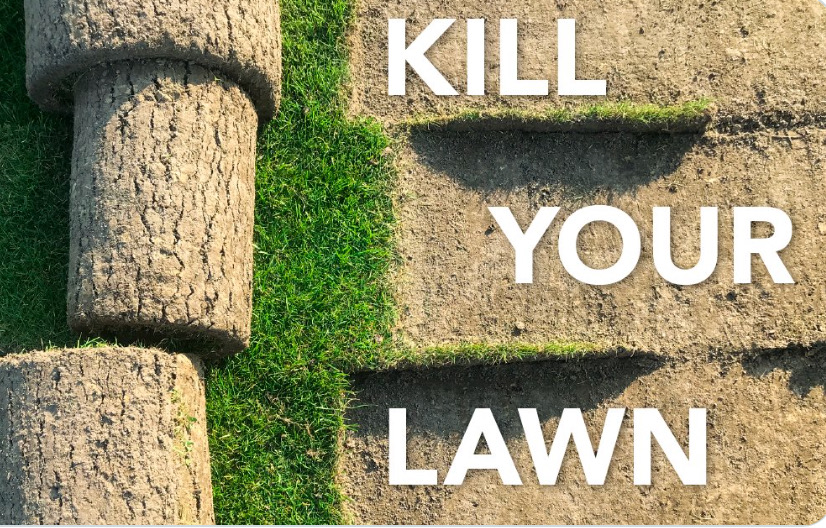National Pollinator Week. Day 7: Why We Can’t Afford Not To Landscape Naturally

Photo: Long Beach Water (Twitter)
In settled places, everywhere you look you see lawn. It’s not difficult to understand why grass is the default vegetation in residential, commercial, and institutional settings. Lawns accommodate such activities such as picnicking, family play, walking dogs, and public gatherings. Also, turf maintenance does not require sophisticated botanical knowledge or landscaping expertise. And a perfect lawn can be a status symbol, giving an impression of respectability and accomplishment.
However, the downsides of lawns, especially ones that are excessively managed and manicured, are many (for more information, see “The Lawn Goodbye?”):
- toxic pesticides (ten times more pesticides per acre are applied to lawns than to agricultural crops, posing health risks to children, pets, and wildlife)
- pollution from excessive use of fertilizer, including algal blooms; low dissolved oxygen; impaired ecological health in our rivers, lakes, ponds, and coastal waters; and emissions of nitrous oxide, a greenhouse gas that is 300 times more potent than carbon dioxide
- environmental impacts of lawn maintenance (mowers, weed whackers, and leaf blowers are notoriously energy-inefficient, and their emissions are unregulated; one mower produces more air pollution in a year than 43 new cars driving 12,000 miles)
- noise pollution (disturbance of neighbors and wildlife as well as possible ear damage to operators not wearing ear protection)
- disposal of yard waste (cut grass, raked leaves, branch trimmings, dead ornamentals, and other organic yard waste amount to 18 percent of municipal solid waste collected, all of which can be used in the natural landscape for compost, mulch, brush piles, or wildlife food or shelter)
- overburdened water treatment and delivery (30% of potable water delivered to homes in eastern U.S. is used for lawn irrigation)
- overburdened sewage systems due to runoff (lawns don’t absorb much rainwater because typical lawns are quite shallow-rooted)
In the U.S., an area three times the size of New Jersey is devoted to turf. In places where they serve no function in our lives, lawns are missed opportunities. Instead, much of this land could be used for vegetable and herb gardens, community orchards, pollinator gardens, wildflower meadows, and natural landscaping for wildlife.
The potential of financial savings can be a powerful motivation to reduce or eliminate the size of our lawns. Compared to the annual mowing of a wildflower meadow at a cost of $30, about $700 is spent per acre per year to maintain a typical lawn. Planting trees and other vegetation for shade and shelter can also cut down on air conditioning and heating bills. And distinctive, well-done natural landscaping offering visual interest and diversity throughout the year has the potential of significantly enhancing property values.
But perhaps the most compelling benefit of welcoming pollinators and other wildlife on our properties is the stimulation, beauty, and solace that they offer to people of all ages. Many of our most cherished memories are of interactions with nature in wild or nearly wild places. Natural landscaping can be a continuing adventure of discovery and delight, and has the potential of bringing us together in an endeavor of creativity and collaboration that will add meaning and richness to our lives in the years to come.
Be an eco-hero and create your own pollinator sanctuary! Please contact me at info@johnroot.net if you’re interested in contributing your gardening expertise, volunteering for pollinator garden workdays, donating extra native perennials for public pollinator gardens, participating in pollinator plant swaps, or helping to spread the word about welcoming pollinators.

1 thought on “National Pollinator Week. Day 7: Why We Can’t Afford Not To Landscape Naturally”